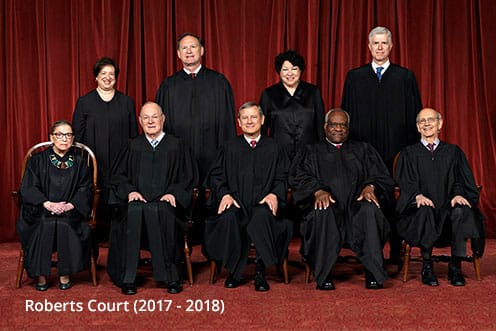Supreme Court

The Supreme Court is bound by the Constitution and has to interpret the Constitution to this day. Although the President might be able to appoint a Chief Justice and may try to influence their decisions, the Chief Justice acts independently from outside powers. They set the boundaries of power for the President, Congress, and States, this entails telling them what they can and can not do. Chief Justice John Marshall set the ground for the Supreme Court and their power by saying that an act of Congress was unconstitutional. The public respected this and what Chief Justice Marshall was doing, and saw them as a powerful part of the government. After that, the Supreme Court had a case in which they ruled that Congress could not ban slavery, this hurt the way that people saw the Supreme Court and their authority. After this happened, the civil war occurred and abolished slavery, the 14th amendment was created to make sure that slavery was abolished. The Supreme Court accepts about 100 petitions a year. Each Justice has a small staff of law clerks and secretaries that help them sort through petitions, but each is responsible for deciding what happens with their case. The Supreme Court meets weekly to decide on which cases to take and discuss and vote on cases that have already been talked about. The cases are heard in public and lawyers on each side are given thirty minutes to make their arguments. The Justices ask the lawyers questions and these questions can be asked to the lawyers specifically or they might use the lawyer to try and ask other Justices questions through the questions that they ask the lawyer. After a few days the Justices vote on the case and after they vote a Justice on the majority side writes an opinion explaining the reasons for their decision.
Work Cited
No comments:
Post a Comment